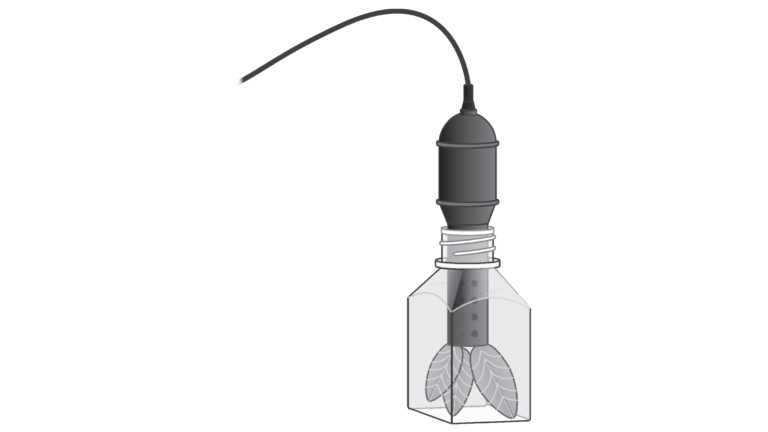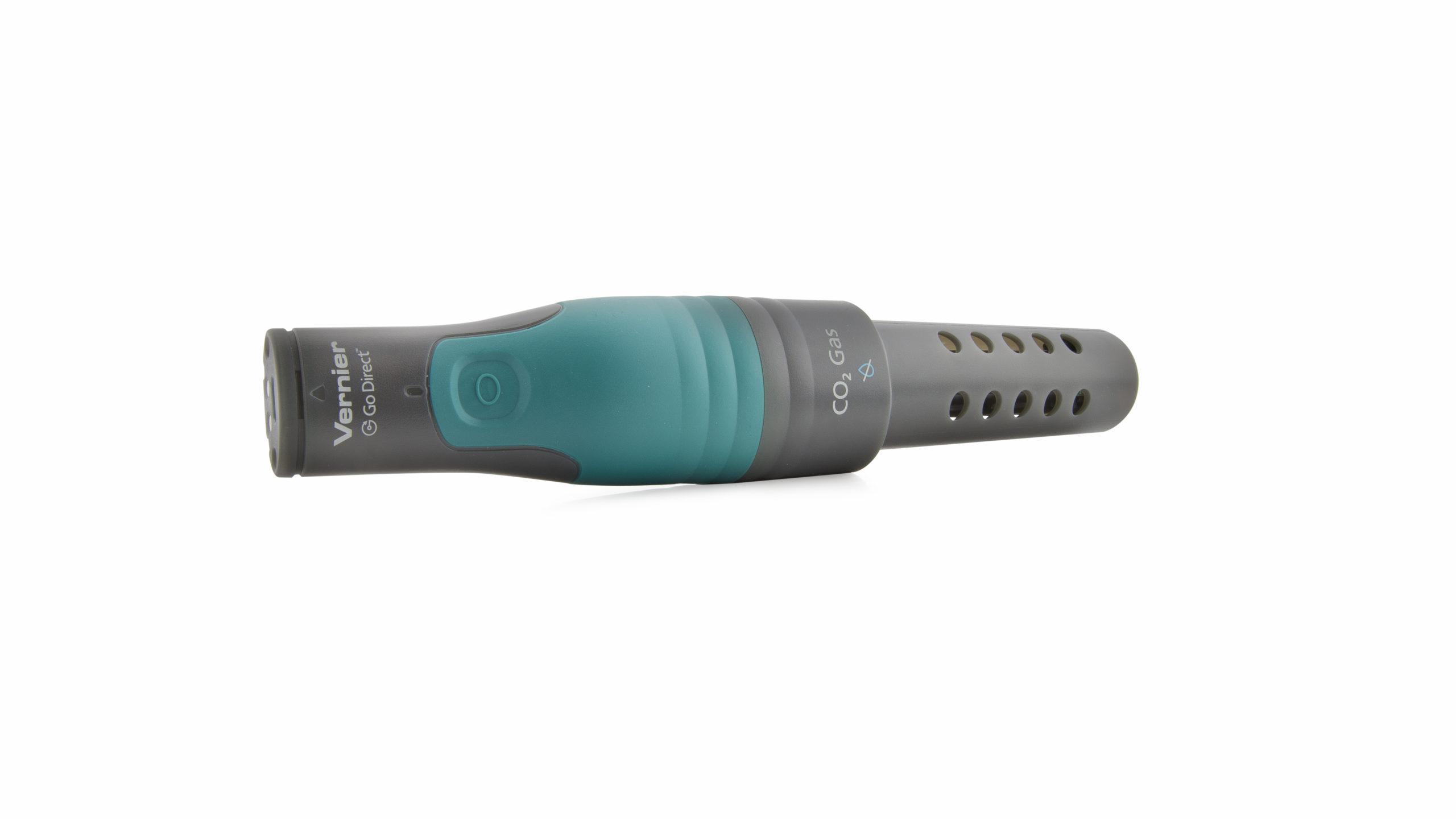
Introduction
Plants make sugar, storing the energy of the sun into chemical energy, by the process of photosynthesis. When they require energy, they can tap the stored energy in sugar by a process called cellular respiration.
The process of photosynthesis involves the use of light energy to convert carbon dioxide and water into sugar, oxygen, and other organic compounds. This process is often summarized by the following reaction:
Cellular respiration refers to the process of converting the chemical energy of organic molecules into a form immediately usable by organisms. Glucose may be oxidized completely if sufficient oxygen is available by the following equation:
All organisms, including plants and animals, oxidize glucose for energy. Often, this energy is used to convert ADP and phosphate into ATP.
Objectives
In this experiment, you will
- Use a CO2 Gas Sensor to measure the amount of carbon dioxide consumed or produced by a plant during respiration and photosynthesis.
- Determine the rate of respiration and photosynthesis of a plant.
Sensors and Equipment
This experiment features the following sensors and equipment. Additional equipment may be required.
Option 1

Option 2

Correlations
Teaching to an educational standard? This experiment supports the standards below.
- International Baccalaureate (IB) 2025/Biology
- B2.2.5—Adaptations of the chloroplast for photosynthesis
- B4.2.3—Photosynthesis as the mode of nutrition in plants, algae and several groups of photosynthetic prokaryotes
- C1.3.1—Transformation of light energy to chemical energy when carbon compounds are produced in photosynthesis
- C1.3.2—Conversion of carbon dioxide to glucose in photosynthesis using hydrogen obtained by splitting water
- C1.3.3—Oxygen as a by-product of photosynthesis in plants, algae and cyanobacteria
- C4.2.6—Autotrophs as organisms that use external energy sources to synthesize carbon compounds from simple inorganic substances
- C4.2.7—Use of light as the external energy source in photoautotrophs and oxidation reactions as the energy source in chemoautotrophs
- C4.2.9—Release of energy in both autotrophs and heterotrophs by oxidation of carbon compounds in cell respiration
- C4.2.21—Dependence of aerobic respiration on atmospheric oxygen produced by photosynthesis, and of photosynthesis on atmospheric carbon dioxide produced by respiration
Ready to Experiment?
Ask an Expert
Get answers to your questions about how to teach this experiment with our support team.
- Call toll-free: 888-837-6437
- Chat with Us
- Email support@vernier.com
Purchase the Lab Book
This experiment is #31B of Biology with Vernier. The experiment in the book includes student instructions as well as instructor information for set up, helpful hints, and sample graphs and data.

